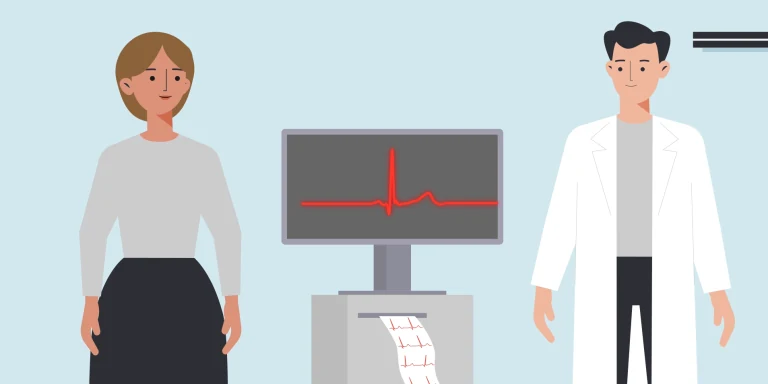
Treatment strategies for heart attack risk
If you are at high risk of heart attack or if you have had a suspected heart attack, you can seek invasive treatment immediately or try medication first. What is best? Opinions differ widely. An overview.
Persistent or recurring chest pains can be a sign of the narrowing of the coronary blood vessels. This means that part of the heart muscle is not receiving an adequate supply of blood. When the relevant vessels constrict completely, a heart attack occurs. If a heart attack is suspected, an echocardiogram is generally carried out. This provides information on the type and severity of the potential heart attack.
Where the risk of myocardial infarction is high or a heart attack is suspected, there are various possible treatment strategies in hospital.
Direct invasive treatment strategy
One is what is known as the direct invasive treatment strategy, in which all patients generally receive a heart catheter examination. Here, a thin tube is pushed through an artery in the groin, the crook of the arm or in the wrist to the left ventricle and contrast dye is injected. It is then possible to detect potential constrictions using images of the distributed contrast dye. If a constriction is found, the vessel can be expanded using a balloon at the tip of the catheter to improve the supply of blood to the heart muscle. A metal artery support, a “stent”, can also be used so that the blood vessel stays open. If it is not possible to fix the constriction this way, open-heart bypass surgery would be needed. Here, the narrowed vessel is bypassed by an artificial vessel.
Medication-based treatment strategy
The initial medication-based treatment strategy involves waiting and giving medication with the goal of improving specific blood levels and other vital signs in order to reduce the risk of complications in a later procedure. A heart catheter examination is only carried out and a stent or bypass used in a second step if this is unsuccessful and patients continue to experience chest pains or a follow-up examination shows that the vessels have become even more restricted.
The medical evidence
The Harding Centre for Risk Literacy at the University of Potsdam has summarised the potential benefits and risks of the treatment strategies in the event of a heart attack or high risk of a heart attack based on scientific studies.
How many people suffered a heart attack?
In an initially medication-based treatment strategy, around 13 in 100 people suffered a heart attack within five years. With the direct invasive treatment strategy, around 9 in 100 people suffered a heart attack, for example during the procedure.
How many people had to return to hospital?
29 in 100 people who initially received a medication-based treatment strategy had to return to hospital within a year. This figure was 22 in 100 for people who received a direct invasive treatment strategy.
How often was surgery necessary despite medication?
If people were initially treated with medication, one in two people had not needed heart surgery within five years. Heart surgery always involves a risk of complications.
Conclusion
Ultimately, everyone must decide for themselves – after consulting a cardiologist – whether a direct invasive method or medicinal therapy is the right option. We hope you now have a clearer overview of this complex issue.
Do you have any additional questions about the advantages and disadvantages of these treatment strategies? Or would you like to know about other health-related issues? Our health advisors provide you with helpful information and specific recommendations.
Health consultation service 058 340 15 69
Monday to Friday, 8.00 a.m. to 8.00 p.m. (local rate).
Helsana health consultation is a free service for everyone with Helsana supplementary insurance. By calling health consultation, you confirm that you accept the terms of use and the privacy policy.


Newsletter
Find out more about current health issues every month and get all the information you need about our attractive offers from all Helsana Group companies * delivered by e-mail to read whenever it suits you. Our newsletter is free of charge and you can sign up here:
We did not receive your information. Please try again later.
* The Helsana Group comprises Helsana Insurance Company Ltd, Helsana Supplementary Insurances Ltd and Helsana Accidents Ltd.